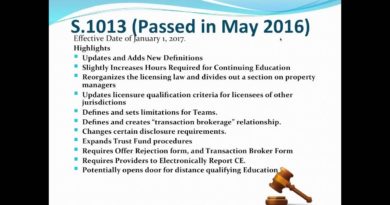Latent vs Patent Defects
In construction, the integrity of the building or structure, is crucial, not only to its longevity, but also to the safety of the occupants. There is a lot to consider for those who are involved in construction and building environments. From materials, installation requirements and design, to cost considerations and legal contract complexities, there is a lot to think about. We understand.
Entering construction contracts can create liabilities you are unaware of, or that you may not be aware of at all. This is especially true when it comes to defects and latent and patent ones. Understanding your legal position is important for all parties involved, especially when something has gone wrong or could go wrong.
Defects can have a significant impact on the operational quality, aesthetic value and structural safety of buildings. The question of who is responsible for a defect can turn any contract or project into a nightmare. We are experts in construction adjudications, litigation and have experience with many standard contracts such as the JCT Suite of Documents. Our construction litigation team is happy to help you with any issues, delays or problems you may be experiencing, whether it’s a small or medium-sized project or major infrastructure work. We represent clients in construction disputes throughout the country.
What Is the Difference Between Latent & Patent Defects?
Latent Defects
Latent defects are hidden flaws in buildings that might not be immediately obvious. These problems can be dormant years before they manifest, complicating liability and corrective works. Latent defects may be caused by a variety of factors, such as design failures, material deficiencies or substandard workmanship.
Latent defect are difficult to detect because they can cause significant damage, and require extensive repair work once they become apparent. These hidden problems can arise during any phase of the construction process, from design and material procurement to the actual build or after practical completion and handover.
Taking a proactive stance on minimising these latent defects can involve various techniques. Increasingly technology; tracking software and ongoing monitoring play a role in larger projects helping the team on the ground detect and address issues early, safeguarding the building’s structural integrity for the long term and avoiding later problems and litigation.
For obvious reasons although latent defects might not be immediately visible, they can significantly affect a property’s market value. Sellers are usually required to disclose known defects.
Transparency and thorough inspections are important.
Examples of Latent Defects
Latent defects can include structural failures hidden within sealed building elements, such as faulty steel beams or corroded internal support structures.
Thorough inspections and transparency are clearly important.
Examples of Latent Defects
Latent defects can include structural failures hidden within sealed building elements, such as faulty steel beams or corroded internal support structures. Another common latent defect is poor electrical wiring concealed behind walls and substandard plumbing installations that result in leaks or water damage over time.
Patent Defects
Patent Defects are those construction flaws that are immediately observable or should be identified through normal inspection processes during or shortly after the completion of the construction or phase in construction.
Patent defects might be identified during the build process and impact your ability to obtain full payment on submitting an application, with a potential for a pay less notice to be served in response. This then in turn leads into a potential adjudication over liability/fault, and ultimately payment.
Patent defects should be resolved before a certificate of practical completion is issued. This can cause problems for contract administrators when there is a time crunch to issue a certification to enable the handover. It is important to avoid liquidated damage if the time is crucial, as it is usually. If a certificate was issued incorrectly, the contract administrator could be held responsible for any problems that arise. During this phase, the client can report any defects to the contract administrator. The contract administrator will then decide whether the defects are defects or maintenance issues. The contractor is at risk if he attempts to address defects in this manner. Uncorrected flaws, for example, can accelerate wear and tear leading to premature failures of elements that would otherwise last much longer.
At a defect liability period’s end, a contract administrator will create a schedule of defects. The contractor is responsible for completing the defects identified within a reasonable amount of time. A certificate should be issued when this process is complete. This certificate has the effect of releasing any retention and resulting in a final certification being issued.
Latent defects are more likely to occur after the final certificate is issued.
Examples of Patent Defects
Visible examples of patent defects include cracks in newly laid concrete, improperly fitted doors, or leaking windows.
What is the Contractual and Legal Recourse for Correction?
Managing and correcting defects, particularly patent defects that are immediately noticeable or can be identified through routine inspections, is essential for project success and client satisfaction.
Contractual Recourse for Correction
The process for addressing any defect is typically governed by the terms laid out in the construction contract, which includes a designated “Defects Liability Period” or “Rectification Period” as above.
Depending on the project and contract, if there is a dispute regarding defects and remedial works and costs, it is usually possible to deal with these via adjudication.
There can additionally be contractual remedies for six months to a year post-completion, during which the contractor is responsible for rectifying any defect reported by the client. This can vary.
The first step is to identify the defect. It must be documented, and then reported to the construction manager or contract administrator. The contractor will be given a time frame to correct the problem. This defect must be corrected before the certificate of practical completion is issued. The certificate states that the project is in compliance with the agreed standards, excluding minor issues that are easily rectified. If there are still substantial patent defects when the certificate is given, the contract administrator may be held legally responsible, which could lead to disputes over financial penalties and liability, especially if the defect has a negative impact on the building’s functionality. If the defect is not corrected within the agreed timeframe, or if the corrective actions are deemed inadequate, then the contract administrator can hire another party to fix the defect and charge the cost to the original contractor.
These costs are usually covered by the retention money withheld from the contractor’s payments, which serves as financial security to ensure compliance with the contract.
Legal Recourse for Correction
Beyond the contractual obligations, legal recourses are available that help ensure construction quality and protect client rights. Clients can take legal action if a contractor fails to fix a defect, resulting in further damages. However, these issues are usually addressed through adjudication or a final account. In these situations, the client may be entitled to compensation for not only the direct costs of fixing the defect, but also any consequential losses caused by the defect. This includes adjudication in order to seek liquidated damage.
Many contract clauses include fines for contractors who delay in rectifying defects. This adds an extra layer of accountability. These clauses are commonly referred to by the acronym LADs (liquidated damages clauses).
Additionally, statutory warranties and consumer protection laws provide further legal safeguards in some situations. These laws ensure construction projects meet quality standards, and that clients are protected from substandard workmanship and materials. These statutes allow clients to seek remedies long after a contractor has completed work, especially when latent defects are discovered. Contact Helix Law.
We specialize in litigation. We have a dedicated construction adjudication and litigation team that handles disputes in the building environment. We are one of the few firms that can handle adjudications in all sizes and levels of complexity. We also back our own advice, and only get paid if it’s right. Our specialist team and depth of knowledge will help you navigate the complexities of a dispute in construction. Contact a member from our construction litigation team today at Helix Law for advice on your contract, project, and the best next steps.






